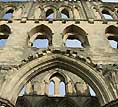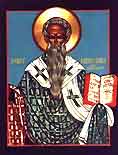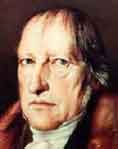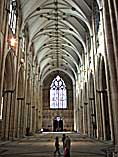The History of Aesthetics in Theology
Aesthetics in Christian Theology has a curious dimension in that it starts before Christianity
with Plato, who influenced much of early Christian thinking, and ends with the present era where Christian
thinking in terms of its theology and practice (i.e. liturgy and church services) are in decline, and yet the
aesthetics engendered by such thinking and practice, i.e. Christian historic art, architecture and music, enjoy an
influence across all the spectrum of human life no matter what the belief or non-belief. To the present generation
these are the aesthetics which seem to provide a direct contact with that subtle, inherent aspect of the human
psyche which we call spirituality, complete with its power to sustain, uplift and, through its beauty and awe,
provide a way to the divine through the concept of hope and fulfilment in a world where conflict and consumerism
hold sway.
Vision of the divine lies at the core of aesthetics as does harmony and
interplay of sound. In these visions lie not only truth and beauty but, through their presentation, the
eschatological hope of something better to come. Who is not transported into another dimension by the art of Rubens,
Caravaggio, Leonardo da Vinci, or the architecture of great medieval cathedrals or ruined abbeys, or the music of
Palestrina or Bach, or re-enactments of medieval liturgy such as the Sarum Advent service?
In the early Patristic period, Augustine (354-430) maintained "All beautiful
bodies express the same truth, for a body is far more beautiful in the fact that it is constituted out of parts
....... for the whole is perfected by the most orderly gathering of these parts - even though they are also
beautiful". Pseudo-Dionysius (ca. 500) was a mystical theologian who synthesised Christian doctrine and
Neo-Platonism (the concept that there is an essential eternal beauty, truth and oneness from which everything
derives and to which everything is drawn, and that the arts can influence our behaviour and character). He was
probably the most profound writer on aesthetics in the first millennium, so much so that many of his thoughts would
have resonance in quantum physics with its theories of interconnectivity. To him God was "the one, the Good,
the Beautiful". Beauty was "the cause of harmony, of sympathy, of community. Beauty unites all
things, and is the source of all things. It is the great creating cause which bestirs the world and holds all
things in existence by the longing inside them to have beauty. The Beautiful is therefore the same as the Good,
for everything looks to the Beautiful and the Good as the cause of being". From God, "the One,
the Good, the Beautiful", derives the existence of everything, including all similarities and
opposites, interrelationships, harmony and love - but one that does not obliterate identity, "the innate
togetherness of everything. Hence, too, the intermingling of everything, the persistence of things, the
unceasing emergence of things".
The first real change in the Church's
view of aesthetics occurred in the early medieval period with the advent of the creeds, ca. 320-870.
Increasingly the written word enshrining doctrine became dominant and started to control the use of aesthetics
until, by 870, images were regarded as but "expressions of language accessible to the illiterate."
Gradually God became described not in positive right hemisphere aesthetic terms but in negative left hemispherical
language and logic, as in "incomprehensible and uncircumscribable, boundless, limitless, formless",
Theodore of Studios.
With the Reformation further degradation of the mystical use
of aesthetics was to occur. Faced with the excesses of the Roman Church in its use of images and relics,
often worshipped in their own right the Puritans banned the use of images or complex music, while Zwingli and Calvin
rejected all use of sacred images. Even Luther maintained that images were only to be tolerated. In response the
Counter Reformation was to affirm the veneration of images and relics because they were but symbols of the
originals, i.e. people were not really worshipping the actual images or relics. They were thinking of the origins of
them. While the heavyweights of Protestant and Catholic were slugging it out over negative issues of doctrine and
authority (my left hemisphere is better than your left hemisphere) there was a branch of western Christianity,
however, which did keep alive a more balanced and positive left/right hemisphere approach. Mysticism. Teresa of
Avilon draws on her seeing of paintings to experience states of wonder and majesty. "These two kinds of
vision almost always come together". From seeing, to experiencing, finally to understanding through use
of the intellect, the power, commands and love of God. John of the Cross (1542-91) equally integrates the two but
with the caveat that it is a process. "God perfects man gradually according to his human nature, and
proceeds from the lowest and most exterior to the highest and most interior", i.e. man must start first
with listening to sermons, attending masses, penance, discipline, meditation and exercising "holy rigour"
before God will grant "supernatural communications", i.e. visions, perfection of feelings and a
sense of unity until spiritual communion with God is attained.
In the post
Reformation period, although Kant (1724-1804) greatly influenced the Romanticists with his Critique of
Judgement, Hegel (1770-1931) had a more practical insight into the arts and its actual relationship with society. He
understood the difference between the truth of art and the truth of reason (i.e. what we now perceive as a
qualitative difference between the 2 hemispheres). He realised that the growing complexity of civil and political
life (think European conflict and Industrial Revolution) favoured left hemisphere practicalities and reason which he
said universally dominated and regulated life through its demands for laws, duties and rights. Consequently the
innocence of the artist (in evidence for him right back to his favourite Greek period) was for ever lost and,
because reason now pervaded and influenced every facet of life, would never return. Even Art, which had spoken to
the quality of life and was at one with the senses, had lost its original truth and life because it would now be
viewed in a more analytical way. It is a rather bleak view yet one which is alive today as it was some 200 years
ago.
In the twentieth century however, we see, at least to start with, the
correlation of aesthetics and the transcendent. Bernard Haring, like Balthasar, thought that morality without a
sense of beauty was joyless and lifeless, mere dull regulation, and went further to argue that beauty was as
transcendent as truth, goodness and the unity of oneness. Paul Tillich found favour with the expressionist style of
painting, which he considered had "the strongest affinity with religious art". He termed it "the
ecstatic-spiritual type", capable of the "manifestation of ultimate reality". Many,
however, considered that modern artists who termed themselves Christian in reality were often producing sentimental,
pious and dull compositions.
In the Second Vatican Council (1962-65) there
was a statement which could be regarded as expressing a view of aesthetics common in the second half of the century.
It was to be analysed and controlled by the intellect as to what was acceptable. Similarly in music the thrust was
to encourage congregational singing and indigenous forms of music. The result was an explosion of exceedingly dull
folk masses, often with guitar accompaniment, the demise of choirs and a collapse in the use of the great
Renaissance/Classical masses of Palestrina, Haydn and Mozart. The inevitable decline in the standard of music has
only recently been halted by Pope Benedict. He believed that the liturgy was disintegrating and called for a new
liturgical movement in which "whether it is Bach or Mozart that we hear in church, we have a sense in either
case of what Gloria Dei, the Glory of God, means. The mystery of infinite beauty is there and enables us to
experience the presence of God more truly and vividly than in many sermons". Brave and welcome words,
but causing little sign of action - yet!.
The problem is that the Church has never
been comfortable with the real power of aesthetics, let alone the concept of ecstasy which so often
arises from mysticism, a bastion of aesthetic experience and expression. It is too independent, uncontrollable and
seems to militate against the authority of the priests and the sacraments. This, with the depressive elements of
war, terrorism, dictatorships and suffering have sought, by the end of the century, to diminish still further the
concept of aesthetics in theological life. Coupled with an increase in analytical philosophy, a decrease in the
influence of Christianity in life, (yet with an increase in fractioning of the Christian religion) aesthetics,
especially as evidenced in its independent mystical form, is no longer a major influence but is now the servant of
any who would care to use it to bolster their cause, their argument, or their latest fad. Faith has become the
central issue, together with inclusive modern language, relevance to modern society and social awareness. The
'otherness', as experienced in aesthetics, has become but an interesting adjunct to belief. Consequently we now find
many universities offering aesthetics as part of courses but inevitably they are all used to bolster certain
theological standpoints. The word, i.e. the left hemisphere of logic, sequential order, analysis and language
predominates.



